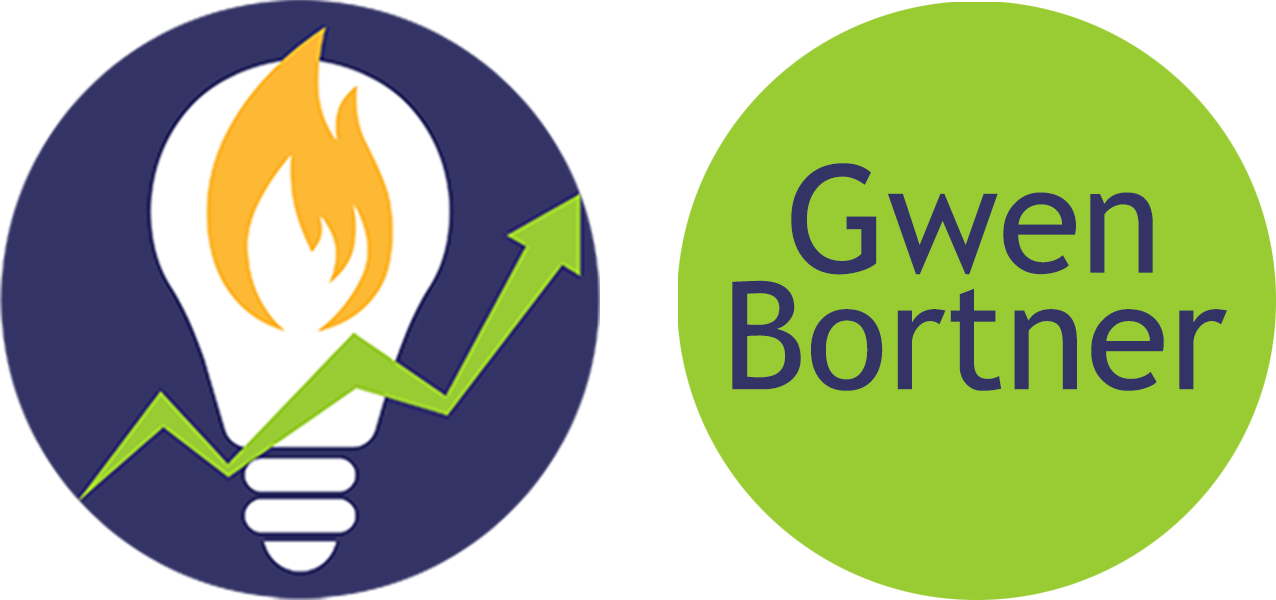
by Site Admin | Show Your Work, Tips & Tricks
Some of you may have “met” my assistant, Jess, on this blog before. Today she’s here to talk about her new role in my company: Content Creator. If I’ve convinced you this month that it’s time to up your content game, Jess will show you one option for making that happen!
Hi everyone! I’m Jess, and I work for Gwen and a handful of other creative business owners to create the content that serves their audience. Today I get to take over Gwen’s blog and explain how that works, and how YOU can leverage the power of a Content Creator for your business.
What
A content creator is exactly what it sounds like – it’s my job to create content: blog posts, e-mail newsletter, website pages, ebooks and online class materials. I have a background in this area: once upon a time I was a high school English teacher and a freelance writer, and I have degrees in English and Education. So it’s in my blood to write the content pieces that educate, inform, and (I hope) empower Gwen’s audience members; this is the stuff that makes me geek out.
Why
Gwen is busy. She runs a business that involves traveling to teach, serving her customers through 1-on-1 consulting sessions, and creating products and services that will help small business owners grow their confidence and their businesses in order to achieve the type of success they most want for themselves. Like most small business owners, she simply can’t wear ALL the hats in her business – her growth would be limited if she tried to do that. So she hired me to help her create the content to engage her audience, so that she can spend her time on tasks that really require her specific expertise and personal touch.
On my side of things, I do this job because I believe that there are small business owners out there (Gwen included!) who have something really awesome to share with the world, and I want to help them spread that awesomeness around. It’s my privilege to craft the stories they want to tell.
How
The “how” piece is slightly different for all of my content clients, based on their needs and the needs of their audience members. In Gwen’s business, this is how it works:
Gwen is an extrovert – she loves to talk, and she needs to process her ideas out loud. That’s why it can be difficult for her to express herself in writing, because there’s no direct interaction with another human being in that process, and it’s from those direct interactions that she draws her energy. (If you’ve ever had a consulting session with Gwen or met her at an event, you know what I’m talking about: her energy is infectious!)
Blog Posts & Emails
In order to feed on this energy, Gwen and I chat via Skype a couple of times a month. During one of those sessions we’ll lay out the plan for her blog posts and e-mail newsletters for the upcoming month. Gwen will explain what she wants to cover in those pieces, and I’ll furiously type notes while she talks. Then I take those notes and I polish them up and turn them into the blog post format you’re reading right now.
Educational Content
We have a similar process for the study guide content for the Small Biz Book Club – I send Gwen an email each month asking her about the study guide we’re preparing (this happens several months in advance of when we actually read the book with the club members). I ask her to break the book into weekly segments, to lay out for me the most important points she wants to be sure to cover, and to list the questions she wants to ask the group members. Then I pick up my copy of the book and, using Gwen’s notes as a guide, I flesh out the study guide content for that book. Our other team member, Holly, reads it for any errors in grammar or clarity, and then Gwen reviews it for a final polish before it goes live to club members.
Gwen and I have timed it, and because of my background in writing, education, and curriculum, it takes me a LOT less time to write her blog posts than it would take her (about 20% of the time, actually!). So even though she’s paying me to do this part of the job, she’s actually saving money in terms of the time spent on the tasks, and freeing herself up to do the work that brings in even more income, like consulting and training.
Who
Hiring a content producer isn’t necessarily the best decision for every small business owner – if your business IS content creation, then maybe you don’t need someone else to do this for you. However, if your business is anything else, then you can free up valuable time and improve the quality of the content you produce if you invest in hiring help with your content. Whether you just want someone to come in one time and polish up your website content, or you want ongoing support to regularly craft emails and blog posts – that type of help is available!
If you struggle to create content that truly serves your customers and tells the story of your business the way you want it to be told, maybe it’s time to get some help! Click here to visit my website for more information.
And if you’d prefer a DIY solution, you’ll find loads of great information on content in Epic Content Marketing, our Small Biz Book Club pick for June! Enter your information below to read along with us:
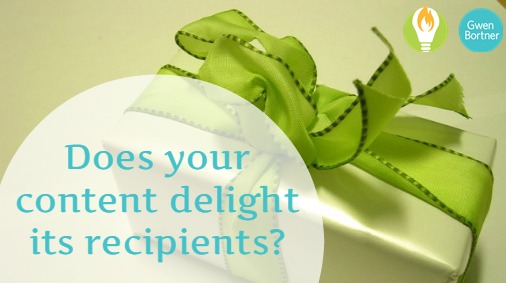
by Gwen Bortner | Tips & Tricks
Have you ever read an article or listened to a presentation and thought – Well, that’s 20 minutes of my life I’ll never get back! Is your audience thinking the same thing about the content you create?
If you’ve ever written an important paper for a school assignment (no matter – ahem – how long ago that might have been!) then you know: it takes research, planning, and time to create something of quality – something that deserves an A+. So… how much time are you putting into the content you create for your business (blog posts, sales pages, newsletters, and more)?
Your audience is inundated with content every single day. If the content you produce isn’t A+ quality, they’re not going to stick around to finish it.
Here are some ways you can improve your content to make it worthy of the people you’re trying to reach:
Share your Wisdom
Just like in school, it’s time to hit the books! Read articles, books, and blog posts on your topic. Educate yourself, and then pass that knowledge along to your audience members. A well-informed audience is more likely to make the decision to buy what you’re selling down the road, so invest the time now to educate them!
Teach a Skill
A type of content that’s usually guaranteed to get good results is the one that teaches a valuable skill. Think about what your audience members would typically type into a search engine, and then write an article or film a tutorial that walks them through the process of learning that skill!
Explain the Why
Last week I reminded you that you can’t sell a solution without first getting your customer to understand that she has a problem. The content you create is a great place to explain to someone WHY they might need the products you sell – to guide them toward an understanding of the problems they face, even if they don’t know it yet.
Assess the Value
How much is your content worth? If you were offered the chance to pay for the information or skills you’re sharing, would you spend money on it? If not, then it’s not very valuable even if it’s free! If you seek to always create content that’s worth paying for, then your customers will feel like they’ve gotten so many freebies from you already that they’re happy to pay you for the “next level” content you want to sell. They will believe in the value of your gated-entry paid products and services because they’ve experienced that value first-hand in your free content.
Pro Tip: The value in your content should be for your audience, not yourself! YOU are most likely NOT a member of your own target demographic. (A classic example: if you sell handmade quilts, the value of the quilt should be the price a non-quilter is willing to pay for the skill that went into it! It’s not the value as perceived by someone who could make their own quilt.)
Listen and Serve
When you give someone a gift they don’t like, you can see the disappointment on their faces. The reverse is also true: when you’ve done your research and purchased that perfect item someone will love, they light up when they receive it. Your content is no different – it should be a gift that you hand-selected for your audience, based on their needs, desires, and pain points. Make it a point to listen to your customers, and always deliver content that solves the problems they’re having in the moment.
If you’re not regularly taking the time to create high-quality content that serves your audience and brings in new business, why are you wasting any time or money creating it in the first place?
If you know your content is lacking and you’re ready to do something about it, join us in June as we read Epic Content Marketing with the Small Biz Book Club! We’ll learn how to create high-quality content that serves our readers and helps them see the value in what we have to offer the world. Enter your information in the form below to join us for the book club:
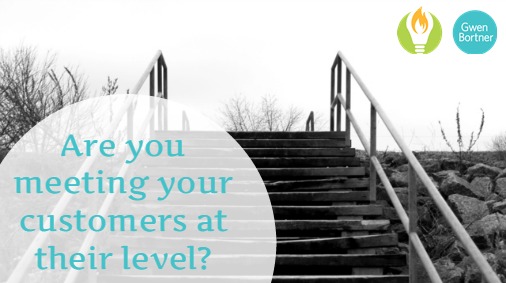
by Gwen Bortner | Marketing
A lot of entrepreneurs are in the problem-solving business: we help people do the things that will make life better. We solve the problems they know they have and sometimes, the problems they don’t. Are you helping your customers solve the problems they know about, or are you trying too soon to fix a problem they don’t know they have?
You understand that your product or service can solve someone’s problem. The question is: does your customer understand that, too? You can’t fix someone’s problem for them if they don’t know they have it. (A quick and easy example: I’m not currently in the market for termite services, but if you came to my house and showed me proof of termite damage, I’d suddenly BE in the market for those services. You’ve got to help me see the problem before I’m willing to pay for the solution.)
There are five basic levels of awareness that your customers have when it comes to their problems. Your job is to meet them at their current level and help them move toward the higher ones. I’ll use the example of a brick and mortar shop owner without a website as our sample customer.
Level 1: Ignorance isn’t Bliss
At this stage, your customer doesn’t know there’s a problem, at all. He’s a local toy store owner who is making occasional sales from customers who walk in off the street, and he thinks that’s pretty good! What more does he need? Nothing, as far as he’s concerned.
Level 2: Tip of the Iceberg
At this stage, your customer knows he has a problem, but has NO idea how to fix it. He probably thinks something like, “I’m not making enough sales to keep paying my rent on this shop.” So he realizes that he should be making more sales, but he isn’t sure how to go about doing that.
Level 3: Basic Awareness
At this stage, your customer knows that there might be options out there to solve his problem. He has seen other business owners employ sign wavers outside their shops, and he thinks maybe he should do that. He has also considered that maybe he needs a website like the store owner next door. He knows he has options, but he can’t connect those options to specific goals or results.
Level 4: Moving toward Choice
At this stage, your customer knows that if he had a website he could probably make more sales, but he isn’t sure the best way to do that. Should he hire someone to build it for him, or attempt a DIY solution? The choices are overwhelming, even though he already has an idea of a path to pursue.
Level 5: Solution-Ready
At this stage, your customer knows that he needs a website, and that you’re the best person to build it for him. He has already done research and has followed you on social media or visited your website so that he understands the credibility you bring to the table. At this stage he is ready to buy, and all you have to do is offer him something to purchase.
When you create a piece of content, like a blog post or email newsletter, you need to first think about the level of awareness your prospective customer has when he’s reading that content. Write the content to move him from one level up to the next, so that you can guide him on the path that will eventually lead to buying from you.
When you’re building your website or other platform, you should have content that appeals to your audience at the first four levels, because you never know someone’s level of awareness when they first come into contact with your work. As you grow your business, you can build sales funnels that start at each level (1-4), and move the customer up to level 5 with carefully crafted content.
Need a reminder? Download this free graphic to help you remember to move your audience through the levels! Just click on the image to save it to your computer:
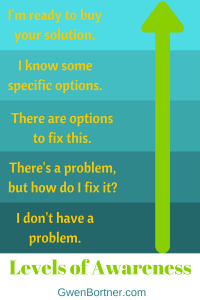
Are most of your customers coming to you at one specific level? How can you create content that will help them advance to the next one?
If you’d like to improve YOUR content marketing and speak to people at all levels of awareness, join us in June as we read Epic Content Marketing in the Small Biz Book Club! Throughout the month you’ll learn how to create content that meets your customers where they are and moves them through your sales cycle. Sign up below to join us in the club!
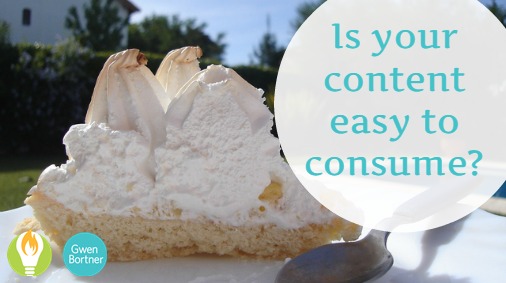
by Gwen Bortner | Tips & Tricks
Creating content is a valuable way to forge a connection with your customers and prospective customers. Having quality content on your website brings your customers back to your “home base” on a regular schedule, and communicates the idea that you are a trusted authority in your niche.
Have I convinced you yet that content is the key to building your business? Last week we talked about how to get the most out of one piece of content, and so this week I want to talk about streamlining that content for two reasons:
- Your customers will connect with your content more easily if it’s easy to consume and has a clear purpose.
- You will have an easier time writing the content if you have a clear plan before you begin.
What’s your purpose?
Before you begin to write any piece of content, you should think about your purpose in doing so. Is it…
- to entertain?
- to inform or educate?
- to sell something?
There’s a place for all of these purposes in the content plan for almost every business. Sometimes, it’s even good to combine them – after all, a dry piece of educational content isn’t nearly as fun to read as a witty, entertaining piece of content that also helps you learn something along the way, right? As another example, some of the best sales emails are written with educational content up front and a sales pitch at the end. Where you get into “content trouble” is not knowing what you’re trying to do with your content, or how you will use these three types of content individually or in pairs.
Before you create any piece of content, think first what you most want the customer to do when she finishes with the content, and use that as your overall purpose.
Dividing up the Content Pie
If you think of the content you put out into the world as a pie, how many slices are you devoting to sales content, vs. educational or entertaining content? The answer should be: “not many!” The purpose of a sales pitch is to offer a customer something right in the moment that he’s ready to buy it; but that customer has to have at least a few interactions with you before he’s ready to buy anything. Most people don’t just show up on your website and immediately purchase the first thing they see.
The amount of interaction required will vary with several factors, including:
- the cost of the item you’re selling
- the relationship you’ve built up in your industry
- the customer’s frustration level with his current situation
- your product’s likely ability to remove his frustration
Think of every piece of content you create as a way to build a relationship with someone who will eventually buy your products or services. How will you introduce that customer to you, your business, and your ability to solve his problems? Use your content to explain that!
Making a Call to Action
When you create content, you should have not only one purpose in mind, but also one action you want the customer to take. If you’re asking someone to click a link here to read a blog post, and then sign up over there for another list, and then find a download in this other place – that’s too many choices. Give your customer ONE thing to do, and it’s more likely that she’s actually going to do it.
Here are some sample calls to action you can make with a single piece of content:
- sign up for an email list
- download something (a free PDF or ebook or resource guide)
- click “like” or “share” or “retweet”
- forward the email to a friend
- hit reply and answer a question
- purchase something
So, to sum up: pick one focus, create plenty of opportunities for your customers to connect with you via content without selling them anything, and pick ONE call to action to bring your reader closer to being a buyer and lifelong fan. Not only will this process make it easier for you to create content, but it makes the content more likely to connect with your audience. It’s a win-win for everyone!
Did you find THIS content interesting or helpful? Share it with your friends & followers! Click the link to tweet this:
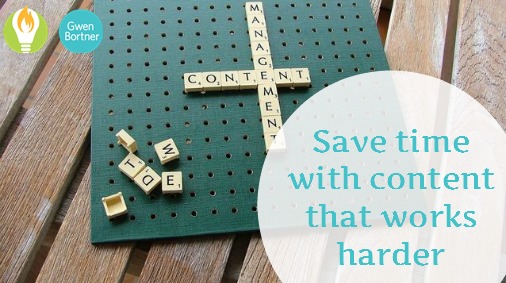
by Gwen Bortner | Marketing, Tips & Tricks
If you’re not a writer by trade, chances are good that when you think about creating quality content for your audience, you start to worry about how much time that’s going to take. While it should take some time to create quality content, the key is to maximize the time you’re spending and get the most out of the content, to make it worth the time it cost you.
Defining Content
For our purposes, the term “content” means,”any educational, entertaining, or inspiring piece of information you put out into the world for consumption by your audience.” A single piece of content could be one page or a 2-minute video, but it could also be a 300-page book or a week-long online course. The first step in maximizing the time you spend creating content is to understand that you don’t always have to go for the longer end of that spectrum; shorter pieces of content are more likely to hook your audience and keep their interest all the way through.
Types of Content
Content comes in as many forms as there are ways to communicate – written word, audio, video, and visual images all make up the spectrum of content formatting. The main types of content you can harness for your business include:
- newsletters/e-mail
- blog posts or website pages
- opt-ins (lead magnets)
- nontraditional content*
- paid content
If you learn how to make these different types of content work together, that’s the key to maximizing your time.
Tips for Maximizing Content
Create ONE main piece of content, and use it in a variety of ways to get the most out of it. For instance:
Scenario A: Maximizing Paid Content
Create a piece of paid content, such as an e-book or online course.
Now take one small section of that content (maybe a resource guide, or the first chapter or lesson) and make it into a lead magnet to get people on your email list.
Create a list of questions people have about this product before they buy, and turn each one of those questions into a blog post.
Take the most common question and turn it into a newsletter topic, really digging deep into your customers’ questions and explaining to them how this product can solve their problems. Then link to the blog posts you created to help answer other questions they may have.
Scenario B: Maximizing Free Content
Think about one big goal your customers have; now, create a series of regular, ongoing content to help them achieve that goal.*
Post this content series on your blog, for free.
In your regular newsletter, talk about the goals your customers have, and then let them know you’ve created this free content to help them achieve those goals.
Make an add-on resource to your free content, such as a workbook or a bonus video, and turn that into your lead magnet for your email list.
Create paid products or services that supplement the process of goal-reaching, for customers who want to go beyond the depth of the free content.
*Ideas for Nontraditional, Free Content:
- an audio or video podcast that breaks down the topic into easily-completed steps
- a social media challenge, such as posting a photo every day to Instagram
- a “mini course” or workshop with one new lesson each day for a week, month, etc.
- a book club, where members can come together to study topics that are interesting to them (Sound familiar?)
- a private online group (like a Facebook group or membership site) where they can come together to discuss their goals with people who are working on similar goals
- a _____-along (read-along, knit-along, quilt-along, de-clutter-along, etc.) – where everyone is doing basically the same thing at the same time and encouraging one another along the way
When you take the time to really plan out your content with a purpose, it becomes easier to see how you can present one piece of content in multiple formats to maximize the time you spent on it AND bring a cohesive theme to your online platforms.
Would you like to work on creating content that establishes you as an authority in your niche and lets you connect with your customers and earn their trust? Join us in June as we study Epic Content Marketing for the Small Biz Book Club!

